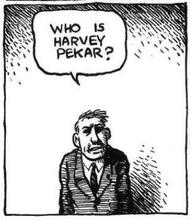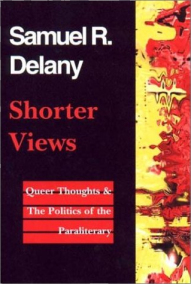|
Originally posted as part of the Groensteen and Page Layout Roundtable at Hooded Utilitarian.  The previous contributions to our roundtable have raised important questions about Thierry Groensteen’s approach to page layout in Comics and Narration. While a rich array of images in Adrielle Mitchell’s post encouraged us to consider how frame irregularities produce meaning, Roy Cook set the stage for an important conversation about the values comics readers attribute to different panel arrangements. Roy’s post really got me thinking about the way Groensteen privileges the layout pattern of the “waffle-iron” by identifying stability, simplicity, and transparency as fundamental attributes of the orthogonal shapes. Groensteen further conceptualizes the grid in the narrative rhythm of comics as the “basic beat” against which the visual and verbal elements of comics can improvise. From this perspective, it’s not difficult to see how one might characterize the grid as “regular” or “neutral” or “invisible,” but I remain troubled by the relative nature of these terms, who defines them and in what context. To complicate the issue, my first instinct was to seek out comics that delight in the wildly experimental layouts that Groensteen might find “more sophisticated (or more hysterical),” but Adrielle’s post provides several excellent examples already. So I thought I would ask instead about comics that use the grid, but in unexpected ways: how do comics adapt the basic panel layout in order to stray from what Roy described as Groensteen’s “waffle-iron way of truth”? When is a grid not just a grid? I wonder, for example, how a comic like “The Harvey Pekar Name Story” fits into our understanding of frame regularity and rhythm. Though we may be inclined to make assumptions about its uniformity at first glance, R. Crumb has not simply drawn 48 identical copies of the same man in the squares of this four-page comic about the different Harvey Pekars listed in the phonebook. Originally posted at The Hooded Utilitarian. When Philadelphia journalist Orrin C. Evans published what would become the first and only issue of All-Negro Comics in 1947, he boasted that the comic book showcased original stories about black life and adventure with African and African American characters in positions of authority, strength, and trendy style. The comic’s commitment to wholesome, affirming images of black people was underscored by the fact that its artists, too, were African American. Evans even included a photograph of himself inside the cover, thereby confirming the extent to which the comic earned the “all” Negro distinction. By the mid-1950s, readers of black-owned newspapers had become accustomed to seeing the work of black comics creators like Chester Commodore and Jackie Ormes included among the reprints of syndicated comics. When the daily edition of the Chicago Defender failed to include black comic strips, readers wrote to complain: This question, posed in March 1956, may sound all too familiar. Nevertheless, much has changed since the 1950s. So much so that “African American Comics” could easily constitute a category of its own (and not just as a display during Black History Month). But exactly what kinds of comics would fall under this designation? Would it only include publications that follow the All-Negro Comics model where black writers, artists, and editors can claim “every brush stroke and pen line” of the final product, or should the term be expanded to any comic about African Americans? Should the stories reflect particular ideological investments? Be recognized by a specialized community of readers and critics?
 Originally posted at Pencil Panel Page. In an essay that Samuel R. Delany published in 1996 on “The Politics of Paraliterary Criticism,” the science fiction writer closes with a call for comics scholars to abandon the idea of “definitions” and “origins” as a scholarly imperative. Not surprisingly, Delany used Scott McCloud as the catalyst for his argument and while the essay praises much of Understanding Comics, he stridently challenges the premise of the book’s opening chapter in which McCloud settles upon the formulation of comics as “juxtaposed pictorial and other images in deliberate sequence, intended to convey information and/or to produce an aesthetic response in the viewer.” Critics have since deliberated untiringly over McCloud’s words, but Delany takes issue with the entire definitional project altogether. He characterizes the enterprise as a series of “empty gestures” from the 1930s when “American critics wanted to make literary criticism more scientific” and that ultimately reinforce the false notion that paraliterature genres lack the quality and complexity of literary works (Shorter Views 239-240). Delany advocates a different approach to genre collections such as comics, handling them as “social objects” that are incompatible with rigorous definitions and instead, “exist rather as an unspecified number of recognition codes (functional descriptions, if you will) shared by an unlimited population, in which new and different examples are regularly produced” (239). Many scholars seem to have followed Delany’s lead and left the constraints of definitions behind in the nearly two decades since Understanding Comics was published. Even our little corner of the blogosphere at PPP privileges “functional description” (see posts here, here, here, here and here). “A discipline is defined by its object,” Delany says, “But disciplinary objects themselves are not definable. That’s why they must be so carefully and repeatedly described” (212). |
AboutAn archive of my online writing on comics, literature, and culture. (Illustration above by Seth!) Categories
All
Archives
July 2020
|



 RSS Feed
RSS Feed